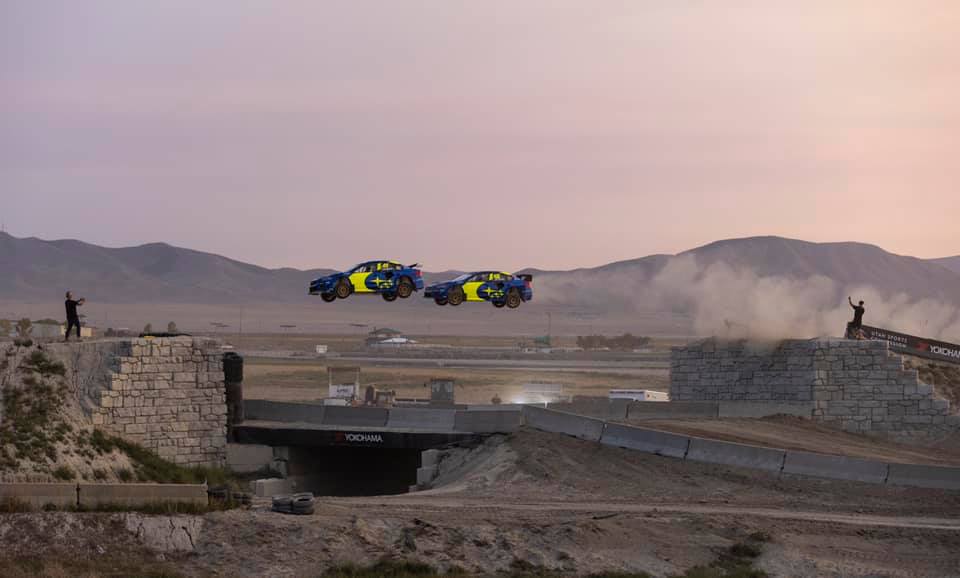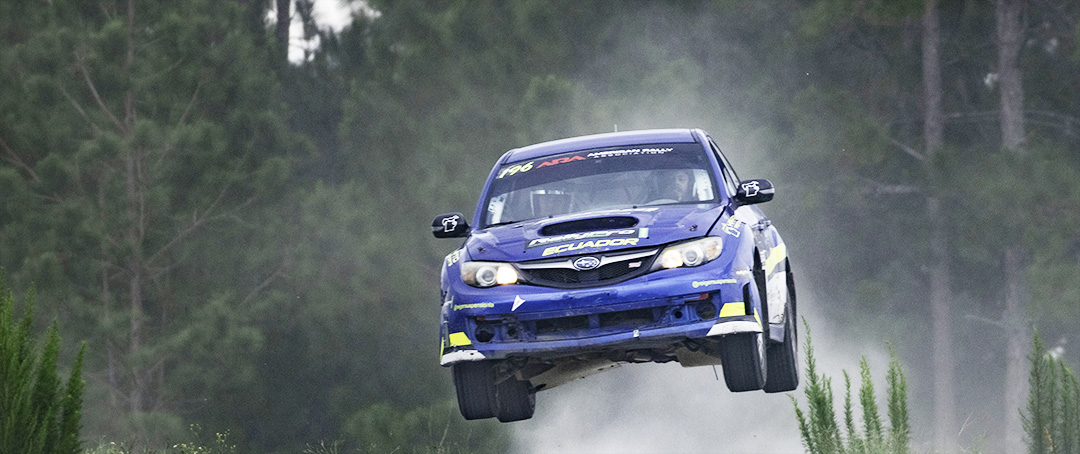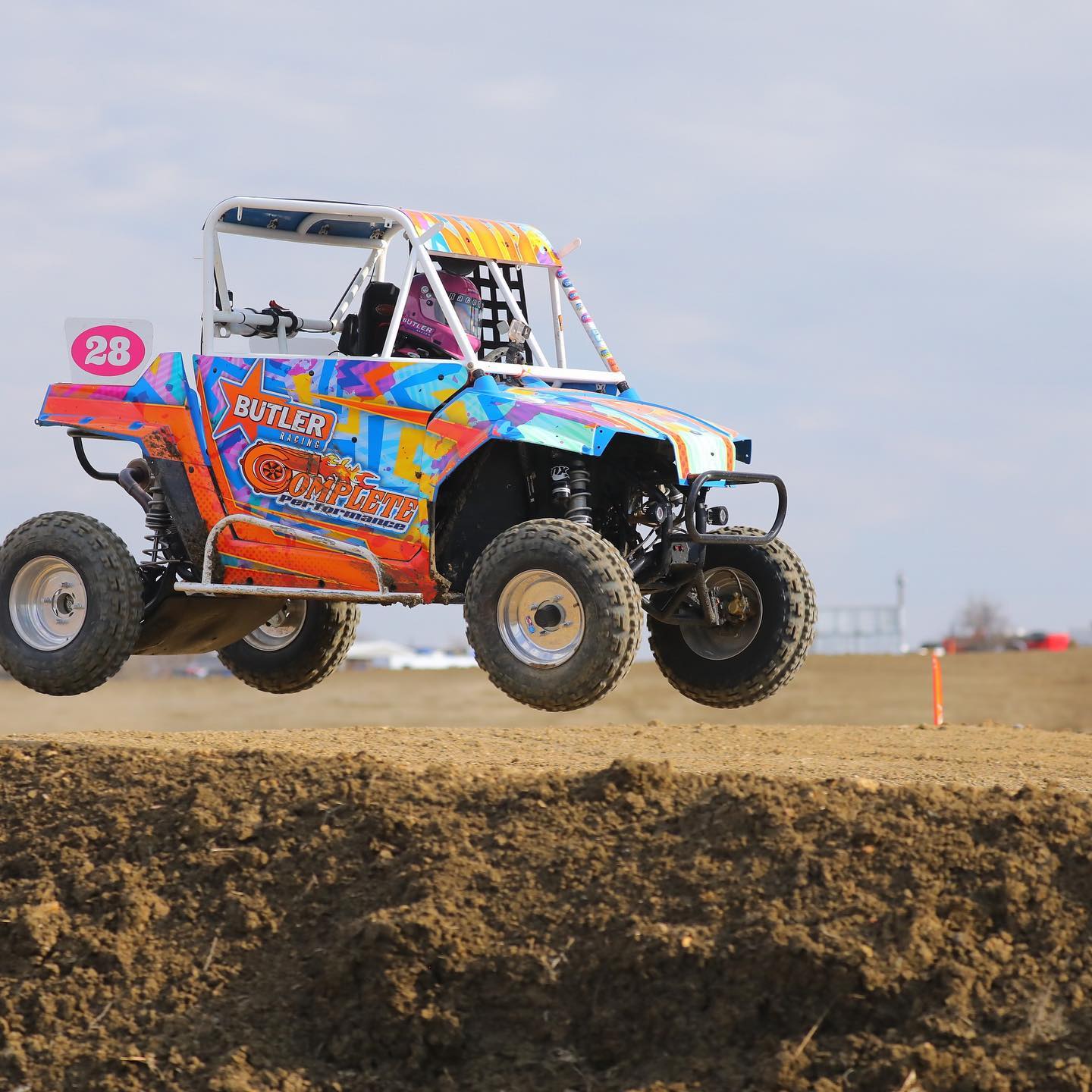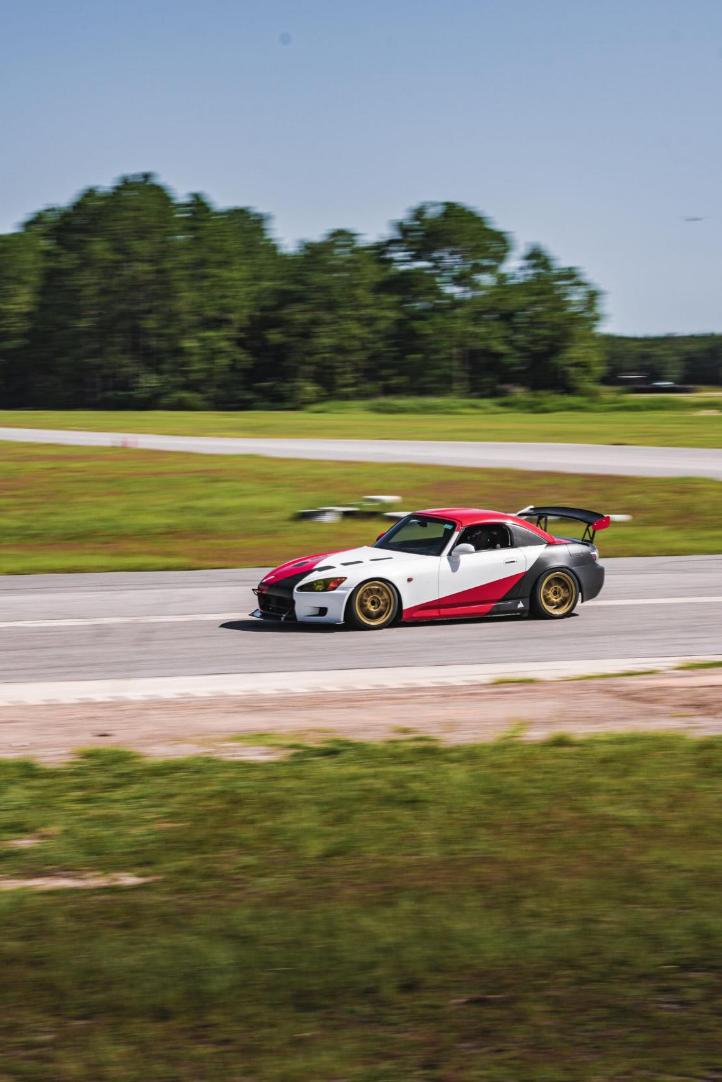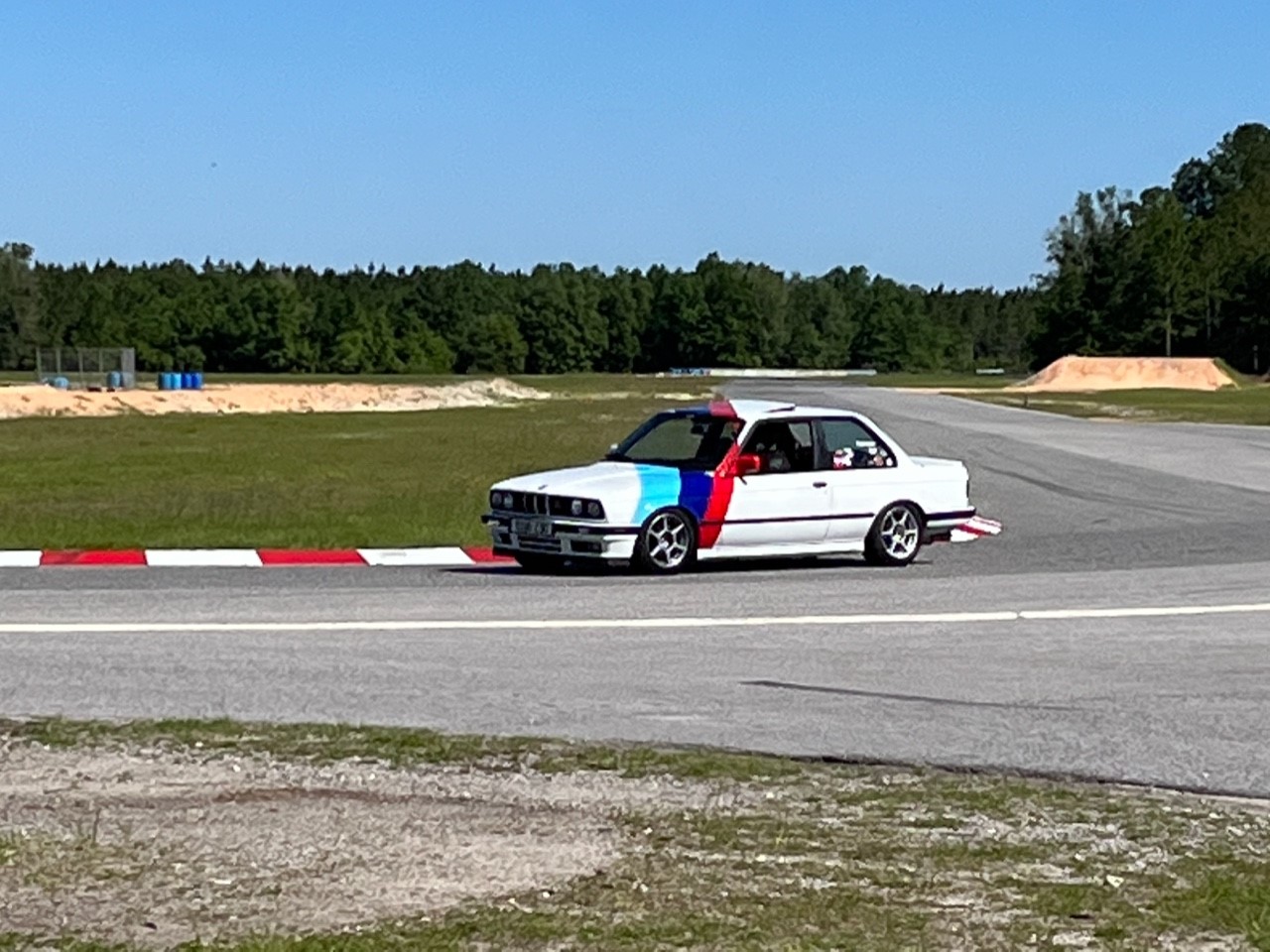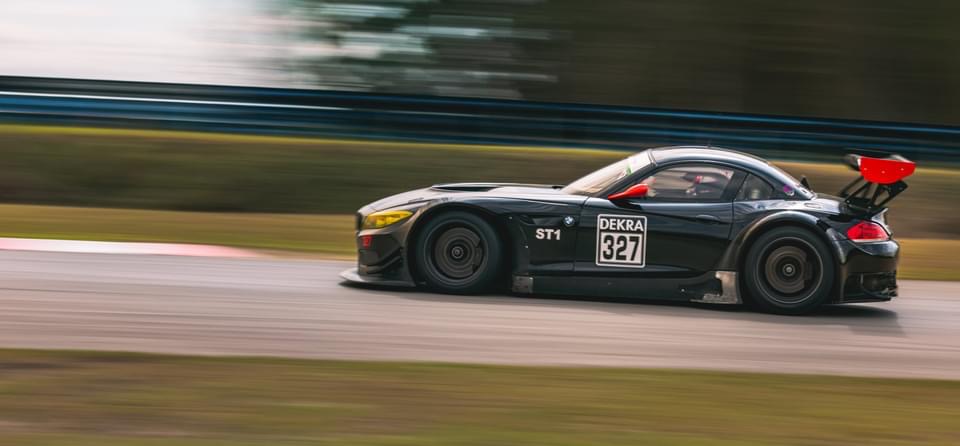What do you think of when someone says “rally.” What is rally, to you? If you’re like me, I think of dirt slides, fans just feet from competing cars, and of course, epic rally jumps. That’s the simplified version.
But, let me share the dirt on all things rally.
Rallying is a form of motorsport that primarily takes place on sections of both closed public and private roads with specially built and modified road-legal cars. These sections of road are called “special” stages and can range in length from 1 to 25+ miles. Most rallies consist of 9 to 20 stages and typically occur over 2 days. Stages cover a variety of surfaces including dirt, sand, gravel, tarmac, or snow and can take place in any season or weather condition, both day or night. Teams travel between set control points, leaving and arriving at specific intervals. Competitors must travel between stages, called “transits”, where all traffic laws must be obeyed. On stage, teams race one car at a time against the clock, usually at one or two minute intervals. Competitors aim to finish with the lowest cumulative time.
Each team consists of a driver and co-driver inside the vehicle who navigate the races using a route book and stage notes, which are either provided by the event (Jemba) or written during reconnaissance. Stage notes contain detailed instructions pertaining to the “course” which outlines turns, crests, jumps, and hazards that allow the co-driver, or navigator, to accurately communicate what the driver can anticipate in the upcoming terrain and allow them to take the course as swiftly as possible. Most rallies provide an opportunity for teams to preview the course in a non-competition vehicle at designated speeds in order to write or edit their stage notes in a process called “reconnaissance” or “RECCE”. For some teams, the driver will call out the turns and road conditions for their navigator to record in a notebook. The navigator interprets the driver’s notes into a shorthand form which they are able to read aloud and communicate through their intercom system during the actual race. However, there are some events that do not provide RECCE, giving teams an added challenge of competing on surfaces and stages they have never seen before.
After a designated number of stages is complete, teams return to a service area. Here, vehicles can be serviced in an allotted time frame, typically ranging from 15 to 60 minutes, allowing crew members to perform any necessary repairs. Outside of these services, only the driver and co-driver may work on the car. Because of the high risk for damage to a vehicle during a rally, the service crew is essential to a team’s completion of the event.
In the USA, events occur coast to coast and take place year-round. Currently, there are 3 sanctioning bodies within North America that host championships which include American Rally Association (ARA), Canadian Rally Championship (CRC), and NASA Rally Sport. Each sanction operates a little differently, but generally abide by a similar set of rules and requirements to participate.
How Does a Rally Operate?
For most rallies in the States, teams can expect to be in competition for multiple days. Typically, teams will arrive at the event location the day before reconnaissance to register and retrieve their notes. Co-drivers will prepare for a long day of RECCE, and teams will utilize “tools” such as a stopwatch or Fastime Copilote watch, which is designed specifically for co-drivers, go-pros, GPS apps for tracking distance or rally computers. For most teams, while the driver and co-driver are away creating or editing their pace notes, service crew members will take the rally car and teams safety gear through scrutineering. Driver safety gear includes an SFI or FIA rated fire suit, HANS device, or other approved neck restraint, certified helmet, and shoes/gloves if utilized. In the event that the car does not pass this process, the crew has an opportunity to correct any found mistakes prior to the start of the event.
RECCE and testing often occur the day before the actual race begins. Testing or “shakedown” is designed to give the driver and co-driver an opportunity to test out their rally car before the event and get acquainted with the terrain. Shakedown is a shortened version of a stage often 1-3 miles that provide a sample of what the roads are like for competition. For some rallies, these testing sites are parts of competition stages, while others are located elsewhere near the event. Shakedown also gives the media a chance to ride along with a seasoned driver at the discretion of the organizer.
After registration, tech, RECCE, and shakedown are complete, the teams return to their dwellings to prepare for race day. Drivers and co-drivers will review their notes together, making any final changes. It is the co-driver who will prepare the final notes and “clean-up” their books to allow for best interpretation and attention to important details such as hazards.
Before the race begins, cars will be corralled into a general location, where they are lined up for spectator viewing during a practice referred to as “Parc Expose”. Here, spectators have the opportunity to interact with drivers and teams from the entire field of entrants and to watch the cars begin their first transit. During this time, organizers often hold drivers meetings to inform teams of any changes, important messages and to wish them well. Once the rally is complete, competition vehicles are typically parked in an area where they are not allowed to be touched or worked on by crew for a designated period of time called “Parc Ferme”, allowing officials to scrutineer any car in question. There is a period of time after the race when scoring is being finalized and teams have the opportunity to submit inquiries regarding time penalties or other concerns during the event using the appropriate method outlined by organizers. While waiting for scores to post teams and spectators enjoy the opportunity to gather for a dinner banquet and awards ceremony and are able to relax and socialize.
What Makes a Rally Car Special?
While rally cars are built to withstand ample impacts, the rules for a rally car intend to keep the vehicle legally able to be driven on a street. Rally cars are required to carry registration and insurance, pass emissions in their state where required and do all of the basic tasks a normal car has to do such as having working lights and blinkers. Cars are checked through a process called “technical inspection” (tech) or “scrutineering”. This process allows officials to ensure competitors are following the rules and competing safely. Each vehicle may be modified within a certain strict set of rules which allows for appropriate and fair classification and to ensure the safety of competitors and spectators, as cars often exceed speeds of 100mph during certain sections of stages.
Despite being street legal, rally cars are built to withstand some of the toughest conditions and potential impacts. Because of the many challenges and dangers teams face in rally, cars are required to be equipped with a full certified roll cage, appropriate safety gear including certified racing seats, a minimum of a 5pt harness and additional safety equipment such as a first aid kit, fire extinguishers, triangles, and window breakers/seat belt cutters. Often cars have skid plates to protect the underside of the chassis, modified suspension to fit the terrain they are competing on, as well as specific rally tires designed to withstand the harsh environments of a rally. Some vehicles are equipped with fire suppression systems and emergency kill switches located on the outside of the car.
Once a build is completed, it must be inspected by an official FIA scrutineer in order to be issued a logbook. The logbook is the official document that holds the competition record of the vehicle. All inspections and major incidents from each event are notated within this book, as well as which events have been entered. Essentially, this book provides a history for the technical inspectors to confirm that any prior damages or notes for changes have been properly repaired or completed before allowing the vehicle to compete.
What are the Differences Between Rally, Rally Sprints, Road Rallies, and Rallycross?
Because of the uniqueness of rally in general, it can often be confused with the differing styles, so it is important to understand the differences. While the vehicles used in all 4 disciplines are often similar models, the similarities end quickly. Road rallies are one of the oldest forms of rally racing. Historically speaking, all rallies were road rallies at some point.
Rallycross, like road rallies, encompasses several styles. The most common and readily accessible form of rally, and dirt motorsport is RallyCross.
RallyCross, in a sense, is a scaled-down version of a stage rally which is laid out on a non-paved plot of land where the course is primarily laid out by traffic ones, rather than trees. Entry fees and safety requirements are considerably lower than any other form of rally racing. In the majority of organizations, a hard top vehicle, valid driver’s license and entry fee are all one may need to compete.
Many organizations have loaner helmets and offer assistance to first-time competitors to ensure the driver enters the appropriate class for their vehicle, understands the rules of the event, gets through technical inspection, and can navigate their way around the course.
RallyCross events are often 1-day events and typically allow most vehicles. The upside to RallyCross is the ability to drive competitively in the dirt, with little risk for damage and for an affordable price, and cars need not be street legal.
Global RallyCross in the States: A Little History & Understanding
Another form of RallyCross that has become popular amongst spectators, is more commonly referred to as Global RallyCross. While RallyCross is known on a more grassroots level across the States, it has also been presented on a closed-circuit during the X games XVI and was referred to as SuperRally for several years. SuperRally involved heavily modified production turbocharged vehicles with all-wheel drive, sequential gearboxes, and offroad style suspension tuned for long jumps during the events. In 2011, Red-Bull sponsored a 5 round Global RallyCross Championship that aired on ESPN and hosted popular American drivers such as Ken Block, Travis Pastrana, Dave Mirra, and Tanner Foust. In 2012, the series presented 7 events and included supported efforts from Subaru, Ford, Hyundai, and Dodge. In 2013, the series went global. In 2018, the World Rallycross event was held in Austin, Texas at the purpose-built track. In 2018, the Americas Rallycross Championship began competition but was canceled in 2019 after a lack of sponsors. Originally, in 2010, there was an attempt to host a 4 event European style RallyCross series by former sanctioning body Rally America, which took place at the New Jersey Motorsports Park.
This style of racing is run on a closed track, and competitors race wheel-to-wheel on a variety of surfaces. Some tracks may occur primarily on tarmac, with a section of infield often covered in mud or gravel. Drivers communicate with a spotter outside of the vehicle, and while competitors do not intend to make contact, challenging courses with powerful cars and slippery conditions often lead to several opportunities for contact. Typically, this style of RallyCross utilizes elimination-style heats, where the final race includes the winners of the previous heats. Cars are set up in a grid-like manner, and often trade places many times during a single lap as they tear through the terrain. Traditionally, the first car across the finish line is noted as the winner.
Rally Sprints- But Aren’t They the Same as a RallyCross?
Another very popular form of rally racing is referred to as a Rally Sprint. Rally Sprints are often shortened versions of stage rallies which encompass the same rules and regulations applied to a smaller course. Rally Sprints provide an opportunity to bridge the gap between grassroots RallyCross events and Stage Rally. Most events occur in one location, where special stages are run multiple times. Some events are held on closed public or private roads, while others may be held on a designated track. Stages may include surface changes, and are run in all weather conditions. These events generally host the entire schedule in 1 day including; registration, scrutineering, a short reconnaissance and racing. Many RallySprints are organized by rally schools and NASA Rally Sport. While safety requirements and expenses change considerably from grassroots RallyCross, entry fees and overall costs to participate are more affordable because of the smaller requirements to organize the event. These events require log-booked rally cars, a driver and navigator and appropriate safety equipment.
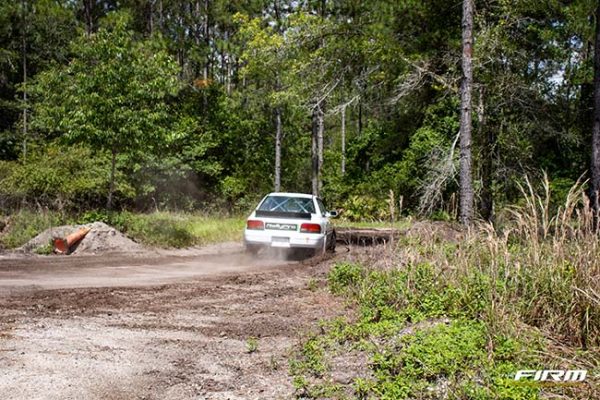
Why is Stage Rally so Unique?
There are many sayings in rally, one of which encompasses the spirit graciously. “Circuit racers see 10 turns 1,000 times while rally drivers see 1,000 turns 1 time!” Events can last for several days and cover hundreds of miles through blistering heat, rain and snow; running day or night.
Stage Rally is the ultimate test of speed, skill, and endurance.
Drivers must learn to master every variable in the types of road surface and any weather condition while possessing the stamina and endurance to make it through hours of racing. Essentially, successful rally drivers must be a drifter, an endurance racer, a drag racer, ice racer, track master, mechanic, expert navigator, a good listener and more. But drivers cannot do it alone. The key to every rally driver’s success is their co-driver and crew.
Because a driver cannot practice a stage rally course, they must rely on their teammate to deliver constant accurate instructions to survive the challenges of rally.
Co-drivers can greatly affect the pace of a driver and their ability to finish an event.
The service crew is essential to ensuring cars are repaired and able to continue to compete.
These individuals often volunteer their time, endure various weather conditions from the hot summer sun to below freezing temperatures to repair any damages, and do their best to ensure the cars are ready to compete.
Not only are events unique to teams, but spectators also receive a completely different motorsports viewing experience. Often fans will be seen lining the roads, just feet away from rally car sliding, jumping, spraying gravel, and sometimes even crashing. Unlike other sports, fans are also able to get up close to drivers and teams and freely check out service areas for free.
The experience at a stage rally is unlike any other. There is a comradery found amongst competitors, fans, volunteers, and organizers that speaks volumes. Whether it be a fellow competitor towing in another team’s damaged car, fans helping to push a car to a control, teams freely loaning out tools, or giving others parts, there is a sense of community that cannot be found elsewhere. Stage rally takes more than just talent and guts; it takes heart and soul and dedication in every aspect, and the passion for the sport and community is what makes it so special.
Road Rally
There are many types of road rallies across the States, which can include Touring Rallies, Course Rallies, GTA Rallies, and Treks. The most popular and closely related style is that of Touring Rally, or Time Speed Distance (TSD) rallies. Road rallies, or TSD rallies as they are sometimes referred to, are relatively cheap to compete in and require very low levels of preparation and are open to a wide degree of abilities and vehicles. TSD rallies became less popular once stage rallies took on a faster pace with more special stages on closed roads. During a road rally, competitors compete over a predetermined course against the clock. Like stage rallies, cars generally start at one-minute intervals, and there is no direct wheel-to-wheel racing. Presently, these events focus on navigation and teamwork of 2, rather than speed. Organizers must determine safe, legal speeds for each leg of the rally and provide step-by-step instructions, called tulip notes, on where to navigate to based on distance, landmarks, and even a “mystery-style” clue for teams to follow. Tulip, or ball and arrow instructions, are simple diagrams of the route junctions with the ball indicating the direction one is coming from and the arrow indicating where one must travel to. Additionally, there may be notated instructions printed next to the diagram.
Teams must calculate their arrival times at precisely measured checkpoints that are set up along the route. Exact arrival times are calculated based upon the designated average speeds. Penalty points are given to teams when they arrive at a checkpoint too late or early. The closer to the calculated time, the lower the score the team receives. Road rally can be compared to that of transit within a stage rally. It promotes the opportunity for future stage rally teams to gain exposure to route books, tulip notes, reading and interpreting instructions, and getting accustomed to controls and time calculations.
Tulip Example:
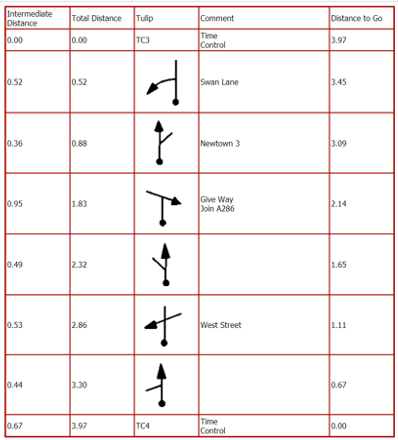
How Can I Get Involved?
There are many ways you can get involved or started in rally.
A good suggestion? Volunteer. Events take hundreds of volunteers to function and there are a variety of ways to help organizers. Volunteering not only gives you a behind the scenes look at the event, but it provides an opportunity to access people and places you would never get spectating.
Check out a local rallycross or road rally in your area, offer to crew for a team, sit down with a rally driver or co-driver and ask questions, be a part of a rally group online where you can read about others experiences and learn. Take the opportunity to learn as much as you can.
Knowledge is power, and it is extremely helpful when getting involved in any type of motorsport.
—
Ready to get started in Rally?
You can’t learn to Rally from a book!
The FIRM offers half-day rally cross up to multi-day Rally Driving Classes designed for any experience level.
Want to hear about special discounts or events, like our Epic Rally-X? Join our newsletter.



